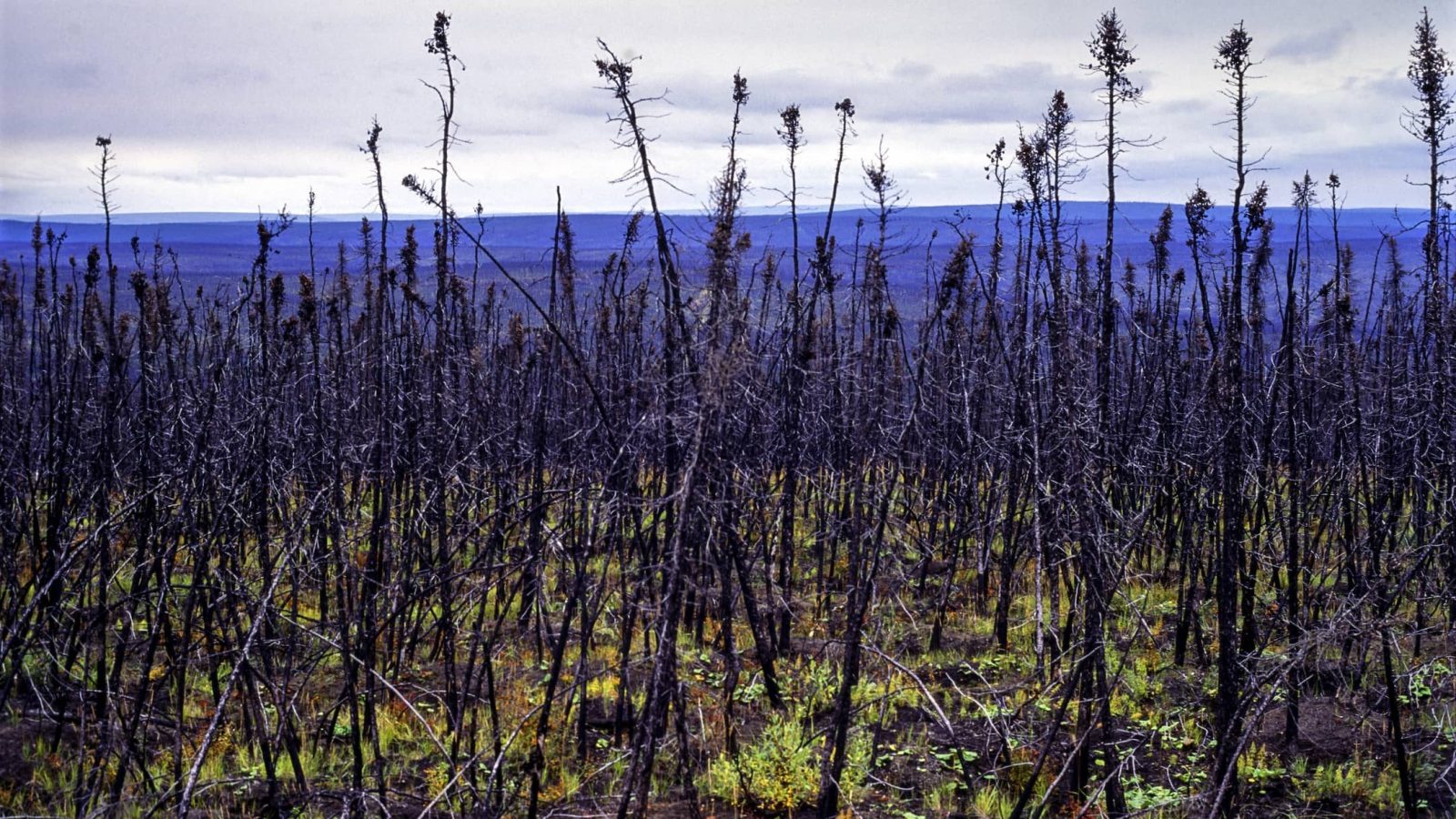Two years ago, enormous fires ripped through some 46 million acres of forest in Russia, the country’s worst fire season on record. The scale of tree cover loss in the massive boreal, or northern, forests that blanket Canada, Alaska, Scandinavia, and Russia that year was staggering — but so was the scale of destruction produced by the Indonesian peatland fires in 2015, the Australian bushfires in 2019, and the wildfires in the western United States in 2020.
Now, researchers have a clearer sense of just how significant the 2021 boreal forest fires were in terms of emissions. The fires produced more planet-heating carbon dioxide than any other extreme fire event that has occurred since the turn of the 21st century, according to a study published Thursday in the journal Science.
Boreal forests, characterized by conifers like spruce and pine, grow in the planet’s high latitudes where it is very cold — below freezing for at least half the year. The trees that live in this type of forest grow slowly and sequester carbon in their trunks and roots for hundreds of years, collectively comprising a massive trove of trapped emissions that researchers call a carbon sink. But the northernmost parts of the planet are warming faster than anywhere else on earth due to human-fueled climate change. Rising temperatures and related drought in these historically cool regions have led to an uptick in extreme wildfire activity and threaten to unleash the carbon stored in the trees that grow there, transforming a carbon sink into a carbon source.
In all, fires in boreal forests, considered to be the world’s largest land biome and a massive carbon sponge, produced nearly half a billion metric tons of carbon in 2021. That’s more carbon than the entire continent of Australia produced the same year, though some of the emissions produced by the fires will be sucked back up as forests regrow.
The study showed that for the past decade or so, boreal forests, especially forests in the uppermost reaches of Alaska, Canada, and Russia, have steadily become drier and hotter as heat waves and drought parched the environment. Fires in boreal forests are a normal part of the life cycle of trees that grow there. But climate change is throwing that cycle out of whack. Just in the past handful of years, forests in northern latitudes reached a tipping point and started to produce far more emissions than usual.
“You get drought, drought, drought, but then you hit a threshold, and all of a sudden, your emissions start to double or triple,” Josep G. Canadell, executive director of a climate research initiative called the Global Carbon Project and coauthor of the study, told Grist.
The researchers obtained the data for their study by tracking concentrations of emissions in the atmosphere using satellites, and then they plugged that information into a computer model to determine where, geographically, those emissions came from. They found that boreal forests, which typically produce about 10 percent of the globe’s annual wildfire emissions, accounted for 23 percent of the world’s wildfire emissions in 2021 — more than twice as much as normal.
James MacCarthy, a research associate at the World Resources Institute who studies wildfires and climate change and was not involved in the new study, told Grist that, while previous analyses have pointed to 2021 as a particularly destructive year for boreal forests, the study is a valuable contribution to the field because it “offers meaningful insights about where fire emissions increased the most within boreal regions and provides potential explanations for why those emissions are increasing.”
Canadell is most concerned about the study’s main takeaway: Boreal forests have served an important and underappreciated role in sequestering carbon emissions, but climate change threatens to unleash that stored carbon. “We need to be very careful with these systems in terms of their future evolution,” he said.



